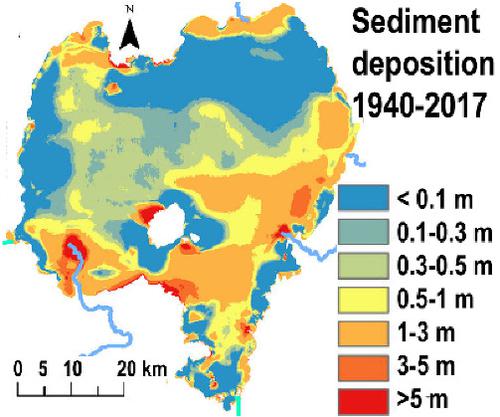当前位置:
X-MOL 学术
›
Earth Surf.Process. Land.
›
论文详情
Our official English website, www.x-mol.net, welcomes your
feedback! (Note: you will need to create a separate account there.)
Sediment deposition (1940–2017) in a historically pristine lake in a rapidly developing tropical highland region in Ethiopia
Earth Surface Processes and Landforms ( IF 2.8 ) Pub Date : 2021-03-23 , DOI: 10.1002/esp.5118 Mebrahtom G. Kebedew 1, 2, 3 , Seifu A. Tilahun 1 , Mulugeta A. Belete 1 , Fasikaw A. Zimale 1 , Tammo S. Steenhuis 1, 3
Earth Surface Processes and Landforms ( IF 2.8 ) Pub Date : 2021-03-23 , DOI: 10.1002/esp.5118 Mebrahtom G. Kebedew 1, 2, 3 , Seifu A. Tilahun 1 , Mulugeta A. Belete 1 , Fasikaw A. Zimale 1 , Tammo S. Steenhuis 1, 3
Affiliation

|
Accelerated sediment concentration has become a pervasive feature in developing countries and has substantially impacted lake ecosystem functioning. Despite this, very few comprehensive studies have examined the changes in sedimentation over the time that agriculture intensified greatly with the increasing population. This study aims to fill this gap using historical and recent bathymetric surveys to determine sediment deposition and link these to watershed development. With its unique ecology, Lake Tana that was pristine less than 100 years ago, is one of these systems experiencing increasing sediment concentrations. A detailed bathymetric survey was conducted in late 2017 and compared with bathymetric surveys conducted in 1940, 1987, and 2006. The result shows that in the past 77 years, Lake Tana's depth decreased an average of 28 ± 11 cm, equivalent to nearly 0.9 ± 0.4 Tg (million tons). Sediment deposition was 2.8 ± 2.3 mm a−1 between 1940 and 1987, when the agricultural intensification started. It almost doubled to 5.0 ± 3.7 mm a−1 after that. Spatially, the sediment deposition was most significant in areas near the major river inlets where 2 to 10 km long peninsulas were formed. The increase in sediment deposition is primarily driven by newly formed valley bottom gullies formed after deforestation disturbed the hydrological equilibrium, and watershed outflow increased.
更新日期:2021-03-23











































 京公网安备 11010802027423号
京公网安备 11010802027423号